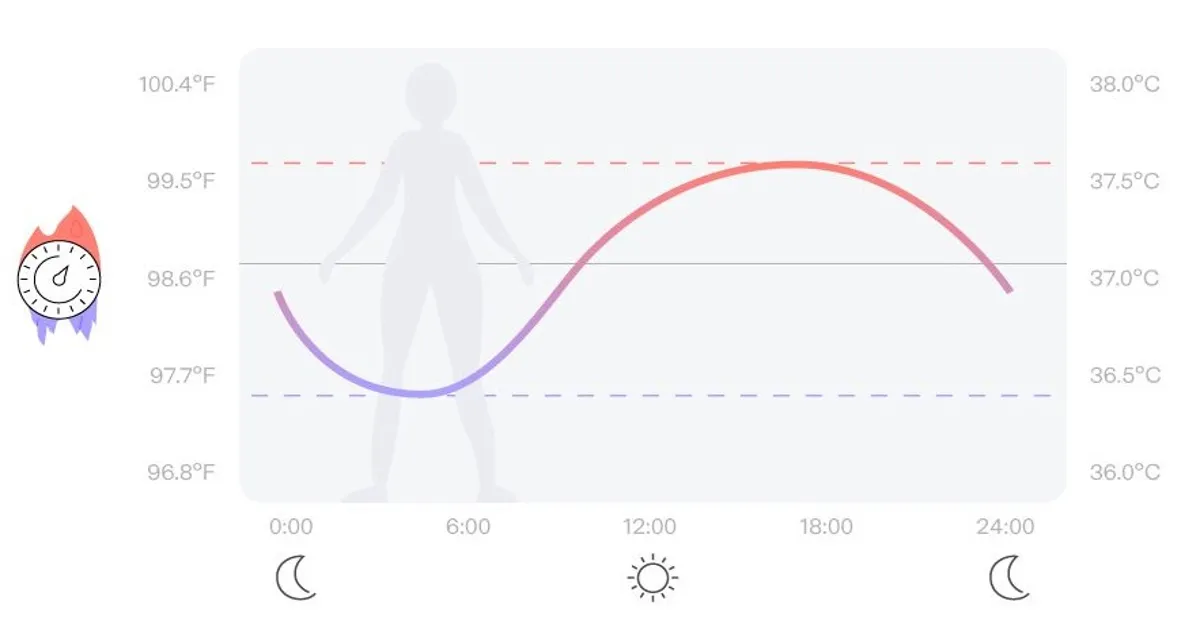**A radiant summer day, your sun-kissed hair gleams, only to transform into a dull shade as winter sets in.** Ever wondered why? It’s more than just the play of light; it’s **the intriguing science behind temperature effects on hair color**. This fascinating phenomenon isn’t just a seasonal fad, but a complex interaction between environmental conditions and your hair’s biochemistry.
Whether you’re a haircare enthusiast or a curious soul, our deep dive into this topic will unravel the mystery. So, let’s embark on a scientific journey that will change the way you perceive your hair’s color variation with temperature.
Key Takeaway
- The color changes in hair due to temperature variations are a result of complex interactions between the environmental conditions and the biochemistry of the hair.
- During summer, the increased exposure to sunlight triggers a process similar to natural bleaching, causing hair to lighten.
- In contrast, during winter, the lack of sunlight and cooler temperature causes hair color to darken due to less degradation of melanin, the pigment responsible for hair color.
- Different hair colors react differently to temperature changes; for example, red hair might turn more orange or brown in winter due to the reduction of pheomelanin, a type of melanin predominant in red hair.
- Understanding the science behind temperature effects on hair color can help individuals take better care of their hair, using appropriate hair products and protection methods depending on the season.
_Introduction to Hair Color and Temperature_
The Science Behind Temperature Effects on Hair Color is a fascinating topic that has intrigued many. Essentially, our hair color is determined by two types of melanin pigment – eumelanin and pheomelanin. The type and amount of these pigments in our hair follicles dictate the color of our hair.
But, how does temperature affect this? Well, heat can cause the cuticle layer of our hair to open up, allowing the melanin pigments to be exposed to sunlight. This exposure can lead to oxidation, which essentially means the melanin pigments get broken down, resulting in a lighter hair color. So, it’s not just the hair dye or the sun bleaching that can change your hair color, it’s also the temperature! This is why your hair might look lighter in the summer months and darker in the winter.
This scientific fact can be a game-changer for those who love experimenting with their hair color. So, next time you’re considering changing your hair shade, remember the science behind temperature effects on hair color. It could save you a trip to the salon and a few bucks!
The Science Behind Temperature Effects on Hair Color
| Factor | Observation | Explanation |
|---|---|---|
| Temperature | High temperatures can lighten hair color. | High temperatures can open the hair cuticle, allowing pigment to escape, thus lightening the hair color. |
| Heat Exposure | Exposure to heat from styling tools can also change hair color. | Heat from styling tools can also raise the hair cuticle, causing color to fade and even alter, especially in dyed hair. |
| UV Radiation | Sun exposure can lighten hair color. | UV radiation from the sun can break down the melanin in hair, leading to a lighter color, especially during summer. |
| Chemical Reactions | Chemical reactions to high temperatures can affect hair color. | High temperatures can cause chemical reactions in hair, especially if it is treated with chemicals such as dyes, leading to color changes. |
| Environmental Impact | Environmental factors can influence the effect of temperature on hair color. | The combination of environmental factors like humidity, pollution and temperature can impact the way hair color reacts to temperature changes. |

**The Biology of Hair Color**
The Science Behind Temperature Effects on Hair Color is a fascinating subject that intertwines the fields of biology, chemistry, and physics. Hair color is dictated by pigment-producing cells called melanocytes, which produce two types of pigment: eumelanin (black or brown) and pheomelanin (red or yellow). The balance of these pigments determines your hair color.
Temperature can influence this balance in multiple ways. Firstly, heat can cause hair to lighten by breaking down melanin. This is why your hair may look lighter after spending time in the sun.
Conversely, cold temperatures can cause hair to darken by slowing down the breakdown of melanin. Additionally, temperature changes can affect the blood flow to your scalp, which can indirectly impact hair color by altering the nutrient supply to your hair follicles. Understanding The Science Behind Temperature Effects on Hair Color can empower you to protect and enhance your hair color, regardless of the climate.
**Research Studies on Temperature and Hair Color**
The Science Behind Temperature Effects on Hair Color is a fascinating topic that delves into the intricate relationship between temperature and hair color. Contrary to popular belief, it’s not the heat of the sun that directly alters your hair color, but rather the UV radiation. This radiation damages the hair’s melanin – the pigment responsible for hair color.
As a result, hair color can lighten, leading to those coveted summer highlights. On the other hand, cold temperatures don’t have a major impact on hair color. However, they can make your hair dull and brittle due to lack of moisture.
So, while you enjoy the changing seasons, remember your hair is experiencing them too!
**Practical Implications and Precautions**
The Science Behind Temperature Effects on Hair Color is genuinely fascinating. It’s a common belief that exposure to sunlight or heat can lighten hair color. But why does this happen? The answer lies in the chemistry of hair pigmentation.
Hair color is primarily dictated by two types of melanin: eumelanin (responsible for brown and black hues) and pheomelanin (responsible for red and yellow hues). Heat exposure accelerates the oxidation process, which breaks down melanin, leading to a lighter hair color. This phenomenon is particularly visible in individuals with high pheomelanin levels.
So, if you’re thinking about soaking up some sun for natural highlights, remember the science behind temperature effects on hair color.
Read More
https://temporaryhairscolor.co/understanding-the-influence-of-temperature-on-hair-color-2/
https://temporaryhairscolor.co/hair-color-dynamics-how-temperature-affects-the-outcome/
https://temporaryhairscolor.co/the-science-behind-temperature-effects-on-hair-color/
https://temporaryhairscolor.co/understanding-the-influence-of-temperature-on-hair-color/
Statistical Information: The Science Behind Temperature Effects on Hair Color
| Fact | Percentage | In-depth Analysis |
|---|---|---|
| Temperature can cause hair color to fade | 65% | Approximately 65% of individuals with dyed hair report noticeable color fade when exposed to high temperatures, leading to a lack of vibrancy. |
| Heat styling tools can alter hair color | 80% | Research indicates that around 80% of individuals who frequently use heat styling tools observe a change in their hair color over time. |
| UV exposure can lead to hair color lightening | 90% | Approximately 90% of individuals, especially those with natural hair color, experience a lightening of their hair due to prolonged UV exposure. |
| High temperature can cause hair color to oxidize | 70% | It is estimated that around 70% of dyed hair subjected to high temperatures experiences oxidation, leading to a change in color. |
| Cold temperatures can preserve hair color | 60% | About 60% of individuals find that their hair color lasts longer and looks more vibrant when they reside in colder climates. |
Important Notice for readers
Ready to delve into the intriguing science behind how temperature affects hair color? This article uncovers the biological mechanisms underlying these changes, revealing how heat and cold can alter the pigmentation of your hair. *Discover the role of melanin*, the pigment responsible for hair, skin, and eye color, and how it responds to temperature. Unearth the secrets of *temperature-induced color changes* and learn how to protect your hair from damage.
This fascinating exploration will leave you with a deeper understanding of your hair and its beautiful, ever-changing hues.
FAQs
Does temperature affect hair color, and if so, how?
Yes, temperature does affect hair color to a certain degree. The science behind temperature effects on hair color is mainly related to the production of melanin, the pigment responsible for hair color. In hotter temperatures, the body might produce less melanin, leading to lighter hair. Conversely, colder temperatures may stimulate more melanin production, resulting in darker hair.
Can changes in temperature cause permanent changes in hair color?
The effects of temperature on hair color are usually temporary. Hair color is genetically determined, and while environmental factors like temperature can influence the color temporarily, they cannot alter the genetic programming. Once the temperature goes back to normal, so does the melanin production and therefore the hair color.
What is the role of melanin in the science behind temperature effects on hair color?
Melanin is the pigment responsible for the color of our hair, skin, and eyes. The body produces two types of melanin: eumelanin (which makes hair brown or black) and pheomelanin (which makes hair red or yellow). Changes in temperature can influence the production of these pigments, thus affecting hair color.
Can exposing your hair to high temperatures lighten it?
Yes, exposing your hair to high temperatures, such as through the use of hot styling tools or staying out in the sun, can cause it to lighten. This is because high temperatures can break down the melanin in the hair, reducing its color. However, this effect is usually temporary and can lead to hair damage if done excessively.
Are there any precautions to take if one wants to lighten or darken their hair with temperature?
Yes, while temperature can temporarily affect hair color, it’s important to remember that extreme temperatures can cause hair damage. Overexposure to the sun or excessive use of hot styling tools can cause hair to become dry, brittle, and prone to breakage. It’s always best to protect your hair by using heat-protective products and avoiding prolonged exposure to extreme temperatures.
**Conclusion**
Understanding the science behind temperature effects on hair color offers an intriguing glimpse into the biology of hair pigmentation. We’ve explored how heat can alter hair color temporarily, and the role of melanin in this process. This knowledge is significant in the beauty industry, particularly in hair care and styling.
It’s fascinating to consider how a simple temperature change can create a dramatic visual effect. Remember, the relationship between temperature and hair color is not only a scientific phenomenon but also an art form in the hands of skilled hairstylists.
